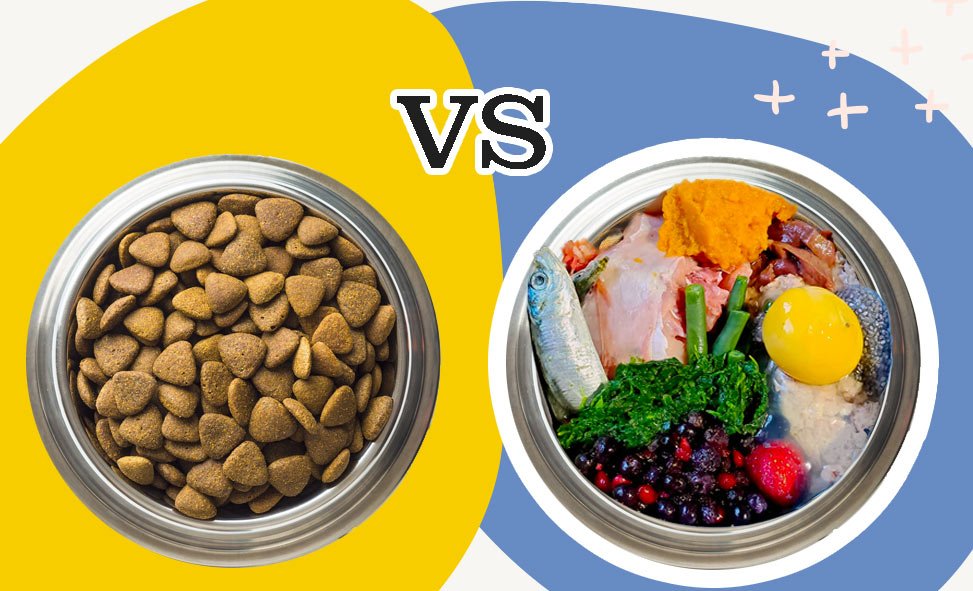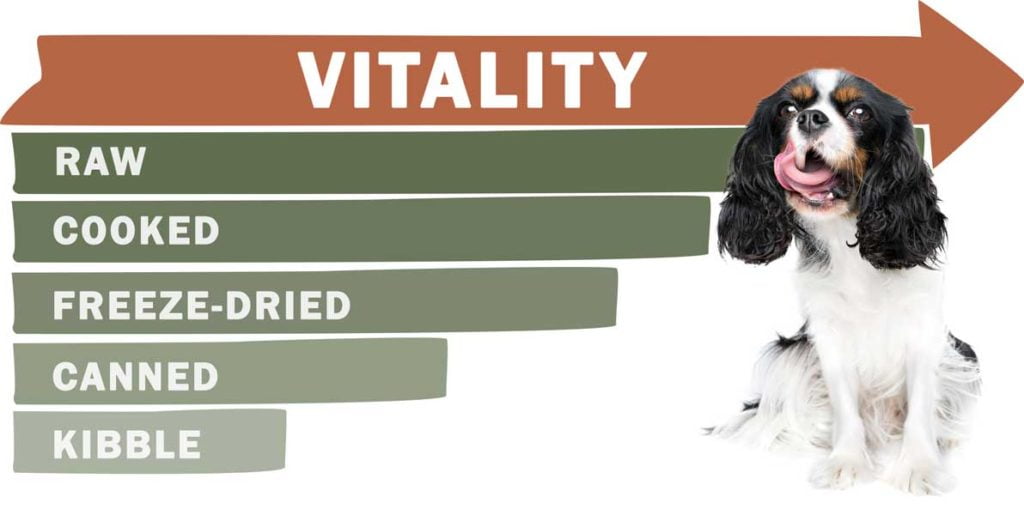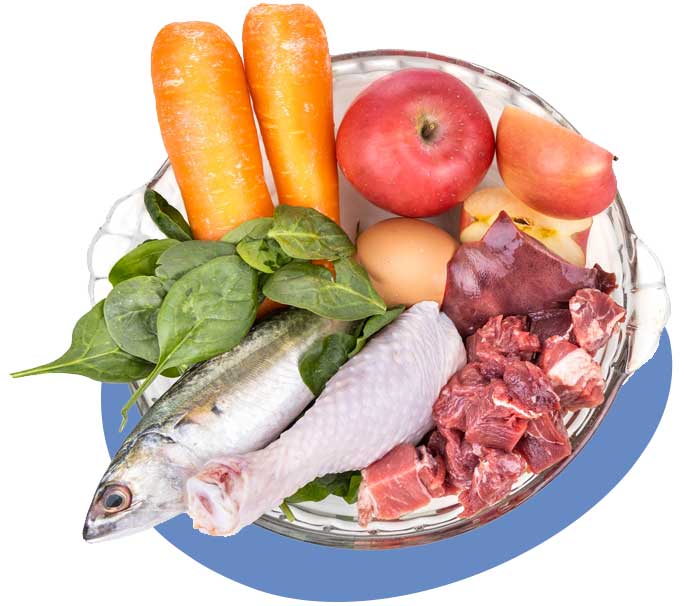“Although we have come to accept commercial foods as being normal or natural ways to feed animals (and indeed ourselves), in fact they are not.
They are simply what we’ve gotten used to in the last few decades. But nothing we can produce commercially ever can rival those mysteriously complex foods manufactured for eons by nature itself.” –Richard Pitcairn, DVM

We, the ones living in the Western world, got used to convenience. Actually we choose convenience any chance we get, including convenient fast food for our pets. Just open the bag or pop the can – voila!
However, in search of convenience we completely forgot (or became ignorant) that all processed foods, whether in cans or bags, are missing seemingly the most important “nutrient” of all. And it’s no wonder we forgot, because nutritional scientists have been ignoring it for many years. But when it’s there, you and I can know it and feel it. It is a quality found only in freshly grown, uncooked whole foods. It’s life energy.
You may argue that dogs and cats have been fed kibbled foods for the past fifty or so years with what seems to be great results. They are not dying outright from starvation or malnutrition, and seem to be happy and fairly healthy.
You certainly can get pets with glossy coats and seemingly healthy bodies that live well into their teens while being fed kibbled foods. Yet pet parents and vets have been seeing increases in chronic dis-eases (imbalances) for 50+ years (kibbles have been around 60 years).
Life-threatening and degenerative dis-eases like diabetes, cancer, obesity, diabetes, autoimmune dis-eases, etc. are now seen commonly in 10 year old pets. It wasn’t long ago when 10 was considered middle age for dogs and cats.
Let’s Bring The Vital Force Back To Veterinary Medicine
For thousands of years, wisdom cultures based their medical system on the life force, also known as Prana and Chi. However, today this vital force energy is not recognized, or quantified. Today energy is only understood as the energy molecules (ATP and NAD+) that can be measured, and as the function of the mitochondrial “powerhouses” that generate them.
We are therefore not aware of a single study that discusses the “energy”/vitality of food. Scientific studies have only measured the burnable calories of food. In a study model, a piece of wood can contain the same calories as a piece of meat, yet our animals obviously cannot use the wood as food! Such studies only measure a small part of the food’s energy.
Metabolic research measures cellular metabolism in detail, not just calories of energy. This research requires an “unknown” factor (“Qx”) in order to balance the computations because they are missing something.
So when we discuss vitality and say that processing reduces vitality, this is “hypothetical”. Yet dogs and cats are what they eat just like it is for us. From Hippocrates (the first doctor) until now, we know that food is powerful (and vital) medicine.
Vitality In Foods
Increasing the fresh food in your pet’s diet by just 25% will increase your pet’s vitality. Natural healing mechanisms and cellular function can be improved by increasing energy. The more vital the food, the easier it is to restore, promote, and maintain a balanced system.
So here comes the big question.
The Big Choice:
Convenience or a Vital Life?
The rest of the article is for you if you chose the latter.
So where do we start, how do we feed if we choose to bring more vitality into our pets’ lives? A good place to start is this food vitality chart:

It’s ok if you start slow, there is no need to go cold turkey. Many pets, especially cats, who easily become kibble addicts, may not appreciate an abrupt change. Start by introducing foods into your pets’ diets that are higher in vitality. Start with what’s in your fridge.
The difference that a fresh food diet can make to your pet’s health is remarkable.
Just by adding one fresh food meal per week to their diet, you will often see improvement in their BEAM (Behavior, Energy, Appetite, and Mood.) And by phasing out commercially prepared foods altogether, you’ll see even more powerful benefits that include…
- Shinier, smoother, thicker, more odorless coat
- Reduced shedding
- Ears that never need cleaning
- Reduction or elimination of tear stains and discharge in the eye corners are gone
- Fresher breath and reduced plaque formation
- Hairball formation and vomiting slows and stops
- Sociability with people and other animals increases
- Stiffness and limping resolves
- Activity levels are boosted
- Training tends to progress more rapidly
- Weight and interest in food normalize
- Current allergies or illness improve or resolve
- Stool volume decreases
- Heightened enthusiasm for meal times!
Many serious ailments can be resolved simply by transitioning your pet from a commercial diet to a fresh one.
Drs. Tom Lonsdale and Ian Billinghurst (who share 75+ years of experience between them) provide compelling evidence for how a raw meaty bone diet (RMB) can result in dramatic health enhancements for both dogs and cats. Furthermore, research studies and case studies both demonstrate a RMB diet can prevent and eliminate most dental dis-ease in pets.

Every animal is an individual, so you will see different results in each one.
Gail Pope of Bright Haven sanctuary is a valued faculty member of the Holistic Actions! Academy. For 20 years, she adopted cats 16-years and older, giving them a permanent home. She found that almost all of them could be fully transitioned to a strictly fresh food diet, and she credits this approach with playing a critical role in helping many of them to age 30 and older.
Fresh food feeding makes sense. The results speak for themselves!
How to start
These are the three words to keep in mind about fresh food feeding.

FRESHNESS
Fresh food is living food that has not been stripped of its vitality through commercial processing. The fresher the food, the greater the vitality. The greater the vitality, the greater the health benefits. Feeding only fresh foods to your pet allows you to safely steer clear of hidden and potentially harmful ingredients (like melamine) that are all too common in commercial pet foods. It also makes it easy to avoid the Three D’s: Dead, Dying, and Dis-eased. You no longer need to worry about metals and toxins in the packaging. Feeding fresh gives you peace of mind by knowing exactly what your pet is eating.

variety
Some pet parents who are new to fresh feeding wonder if it can provide all the nutrients their pet needs. The answer is, absolutely! In fact, a fresh diet that includes a wide range of foods fed throughout the week far exceeds the energy and nutrient value of commercially prepared foods. In, Rationale for Animal Nutrition, veterinary nutrition specialist, Dr. Randy Wysong, discusses this in detail. Here’s the summary:
- Nutritional “requirements” are based on averages, not individuals.
- Even the guidelines of the National Research Council (NRC) are prefaced by a statement that the recommendations are not definite and will continue to be modified.
- To know what an animal or person needs nutritionally, one must have a complete knowledge of each food ingredient (which can differ among individuals), complete knowledge of nutrition (we do not have that), and a complete knowledge of the digestive process of your individual animal.
For example, liquid diets for people and dry food diets for cats are touted as “complete and balanced”. They can indeed keep people or animals alive, but that’s hardly what we’d call optimal nutrition, nor even a baseline for such.

moderation
There is such thing as too much of a good thing. For example, eggs or sweet potatoes can play a wonderful role in your dog’s diet, but moderation is the key. Too much of anything can result in imbalance.
+ + + + + + + + + + + + +
It’s no longer considered to be a “fad” or “spoiling” your pet by feeding fresh food. In fact, the number of people who have abandoned “fast food” and opted for homemade pet food is huge, and growing. There are books, videos,magazines and catalogues, social media groups devoted to holistic pet care and the preparation of healthy homemade diets. You can conveniently start today!
